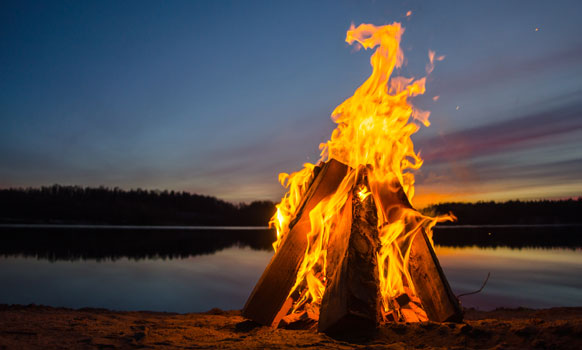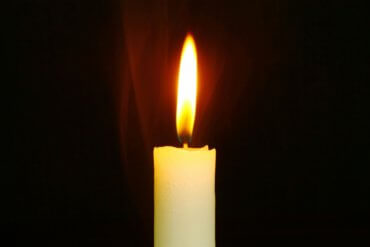
How Rosh Hashanah Shows Us a Path to Wholeness
Everything has a season, and for Jews this is the season of introspection, making amends and beginning anew. The High Holy Days of Rosh Hashanah and Yom Kippur are our chance to start over again. It’s not the kind of fresh start that is as if nothing has happened, because if you’ve lived a year, a lot has happened. And if you lived last year, well, even more has happened.
Perhaps the isolation of this year offered too much time for introspection. And emotional distance seems to be the unintended harvest of social distance. But with the year that we just had, as well as with the year that looms ahead, it could be nice to grasp the opportunity to make amends now.
On Rosh Hashanah we blow a shofar, a twisted ram’s horn. Its sounds awaken us to consider new possibilities, and its shape reminds us that the path to wholeness is not straight. If we look in one end of the shofar, we cannot see out the other. But we know the other side is there.
Even more than its shape, the audio notes of the shofar teach that the path to wholeness is complicated. “Tekia” is a long note, “shevarim” literally means broken and consists of three short blasts that sound like heaving sobs, “teru’ah” is nine quick, staccato pulses.
These notes are blown in sets: “tekia” sandwiches with “shevarim” or “teru’ah” fillings: tekia-shevarim-tekia, tekia-teru’ah-tekia, tekia-shevarim-tekia.
If the notes were lines, they’d look like this:
_________ ____ ____ ____ _________
_________ _ _ _ _ _ _ _ _ _ __________
_________ ____ ____ ____ __________
The sound is meant as a prayer. It harnesses the breath, bypassing the vocal cords to express in sound what cannot be expressed in words. When I listen, I try to allow the thoughts I have already formed to fall away and make room for those felt but not yet crystalized to be expressed instead.
A few years ago I had a very sick grandson. It was such a comfort when he was born as he was named after a teenaged son I had lost a few years prior, and after my husband’s beloved father. His new little wholeness filled so many broken places in our hearts. And now we weren’t sure if he would live. Again? Couldn’t we just rest in the wholeness? Why did we need another tour through dark and broken places?
That Rosh Hashanah, as I listened to the shofar, I heard my answer: Tekia, shevarim, tekia. Whole, broken, whole. Tekia, teru’ah, tekia. Whole, broken, whole. I understood that the path to wholeness is through the broken. But even more, on the other side of whole is brokenness again.
It’s a pattern that repeats itself time and again. In our work, in our friendships, in our politics, in our health, in our home, in our hearts. Whole, broken, whole. What can we do with the brokenness, difficulty, challenge that is woven into the fabric of our existence?
Einstein said, “In the middle of difficulty lies opportunity.”
The High Holidays season is the time to pay close attention to opportunities. In thinking about mending relationships that have been compromised over the past months of challenges, can we uncover a well of humility? Can we tap into a stream of compassion? Can we leave room for others to be right? Or even just leave room for others to be? Can we learn something new? Can we acknowledge the gift?
What about when someone has caused you pain before, someone you’ve worked to understand, or to forgive, and they are at it again? What if it’s someone close to you? What if that someone is even God?
Shortly after Rosh Hashanah, my grandson was put into hospice care. He got morphine for his pain, but that did little for ours. Is there room for God to be right, even when it’s so painful? Everyone in our family reached a different conclusion. Some were willing to work with the relationship. Others felt it was irredeemably broken. It’s easy to get stuck in the broken places and not even know that there can be something new on the other side.
Over the years, I have learned that the wholeness that lies on the other side of broken is not the wholeness from which we departed. With creativity and a leap of faith, in one’s self as well as in the other, a relationship well repaired can be stronger for the trial. And a person who seizes the opportunities and grows through a challenge can be more resilient, more capable, more developed on the other side.
The days right before Rosh Hashana serve not merely to complete the cycle of the Jewish year, but to make the year into a spiral, achieving new heights with each new insight, with each new repair, with each new hope. We have all lived through difficult times before, many of us still are today, and we almost certainly will again. The twist of the shofar reminds us: you might not be able to see it, but there is another side.
If you found this content meaningful and want to help further our mission through our Keter, Makom, and Tikun branches, please consider becoming a Change Maker today.








1 comment
Sort by
I am so sorry for your losses, Aliza. I always say that we can never begin to understand why HaShem Does what He Does when and how He Does it. He Created us to be finite and so we can never touch his Infinite Wisdom and that’s apparently why He Made us as He Did. If I could, I would take your pain away…but know that I hear you…and appreciate that you try to grow from and understand these painful challenges.